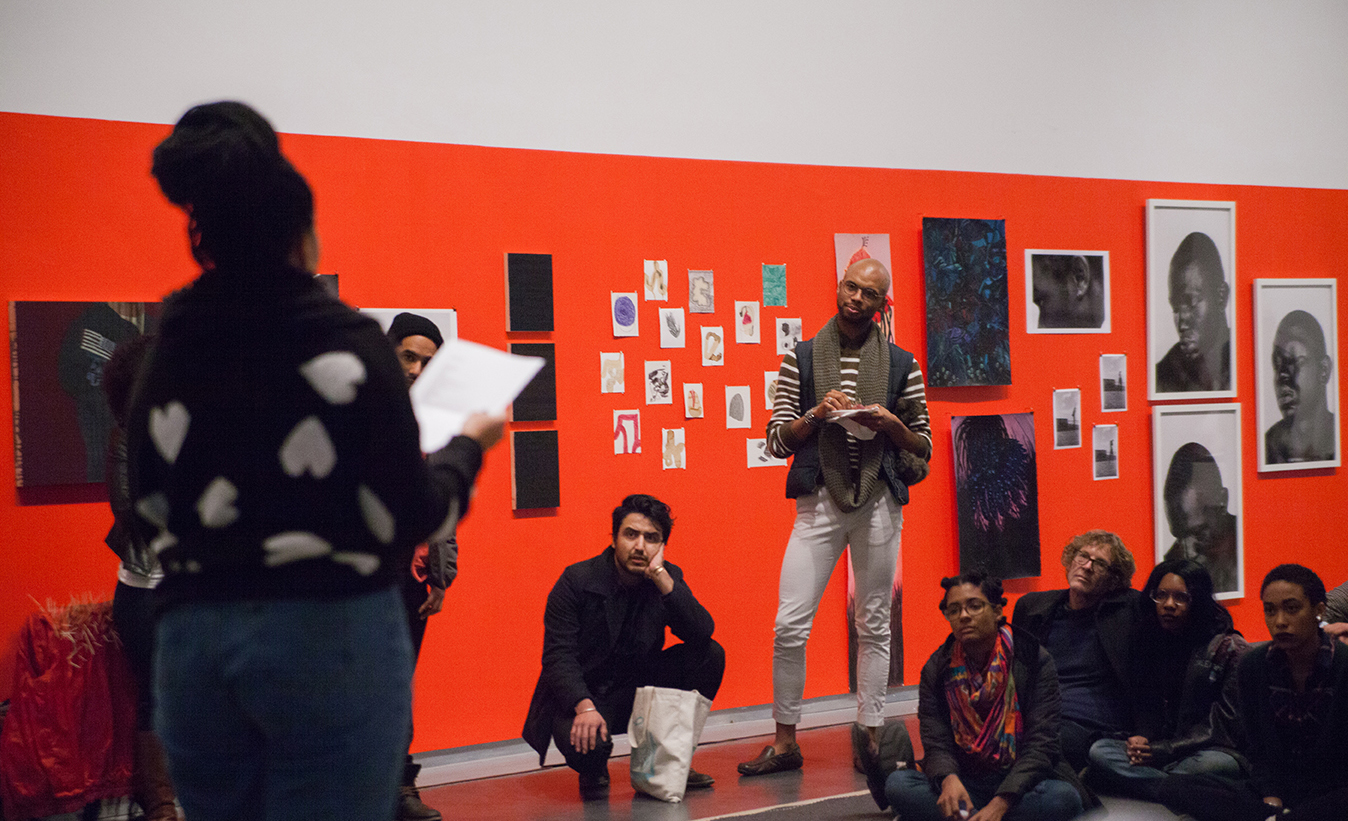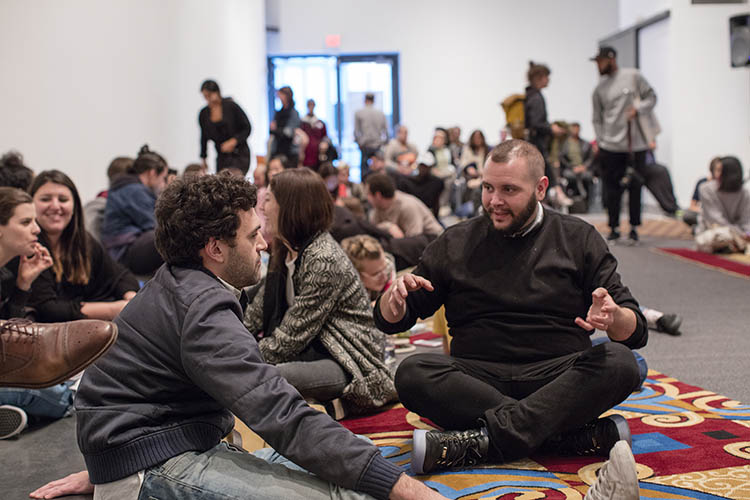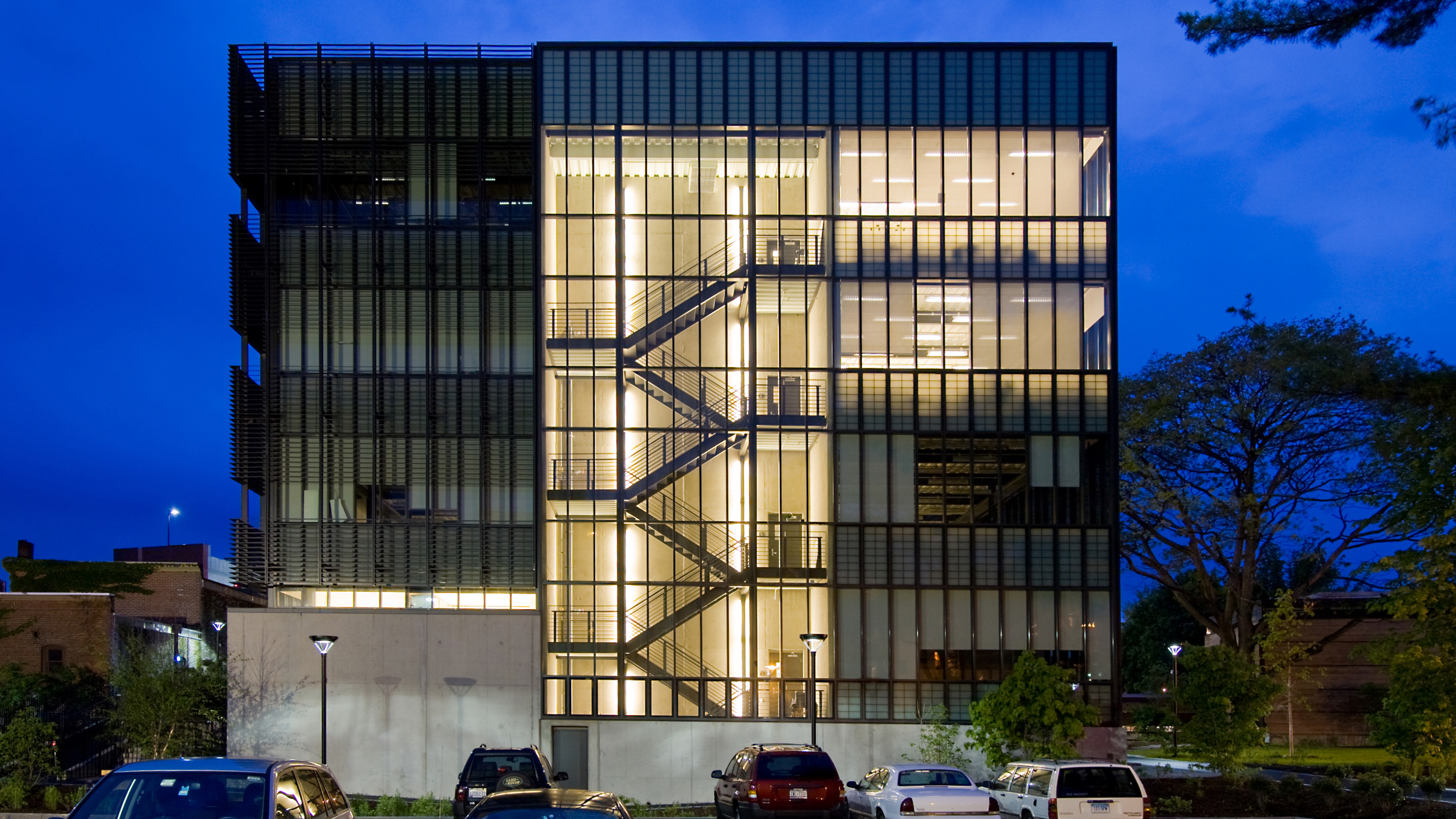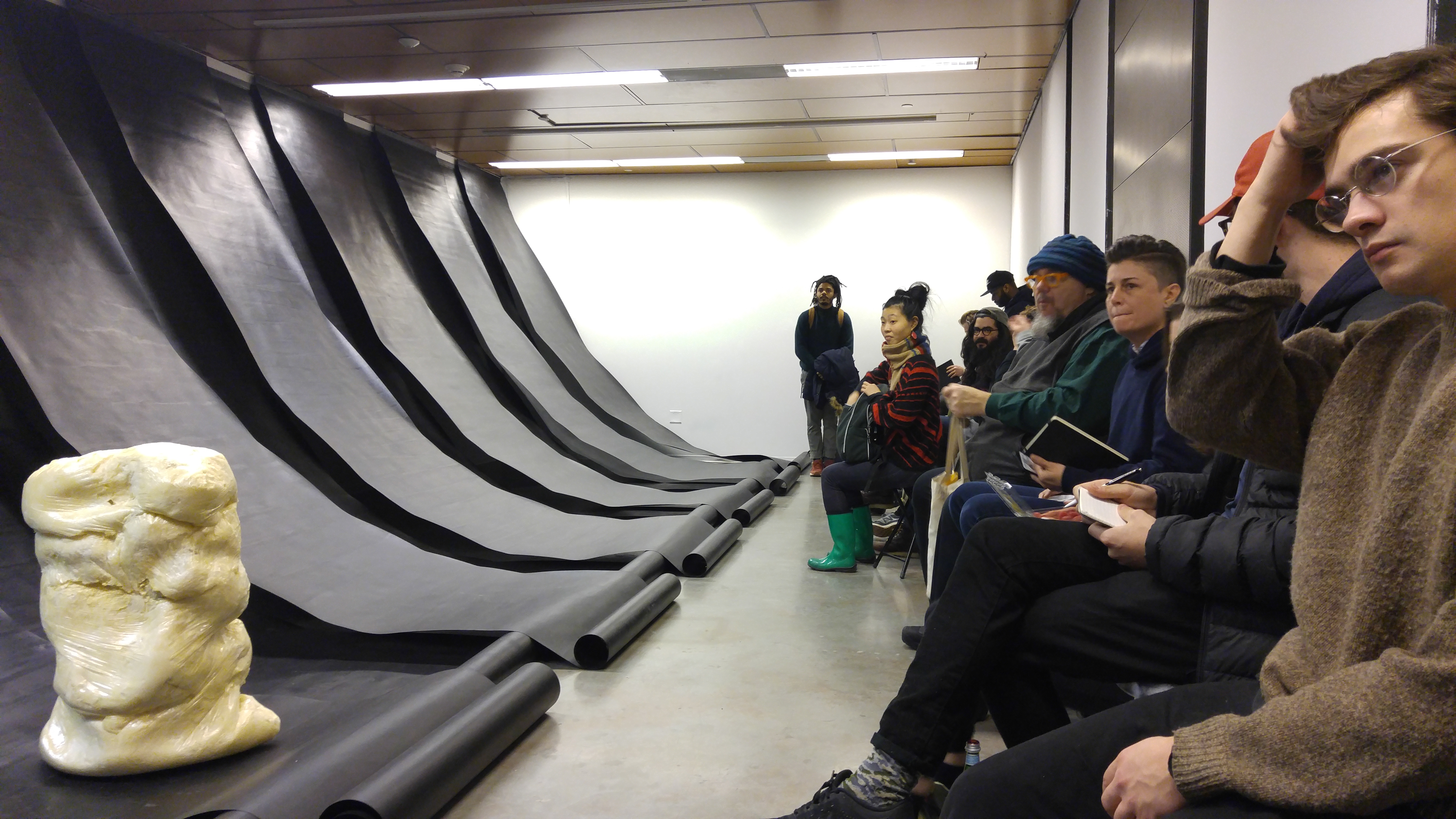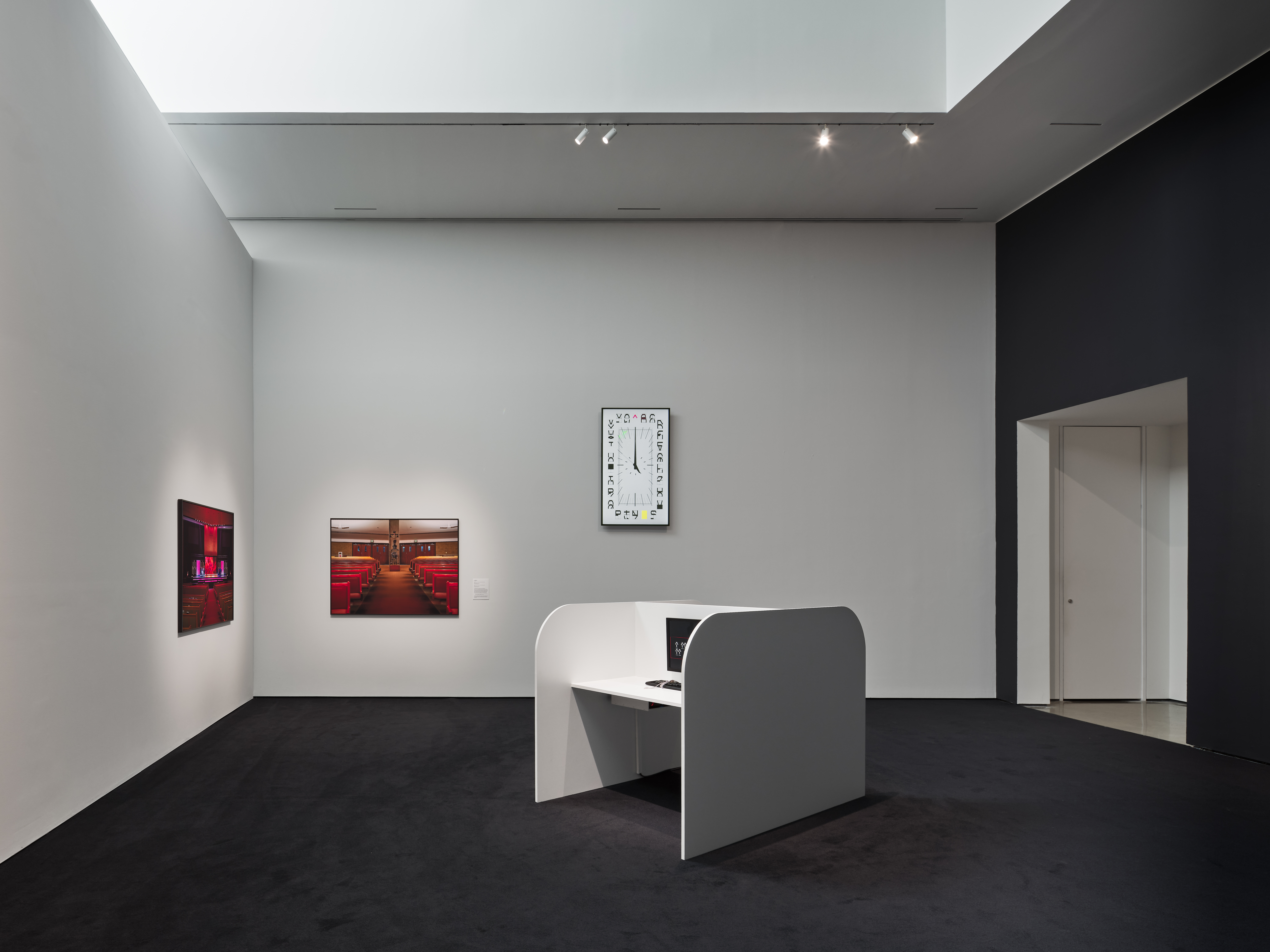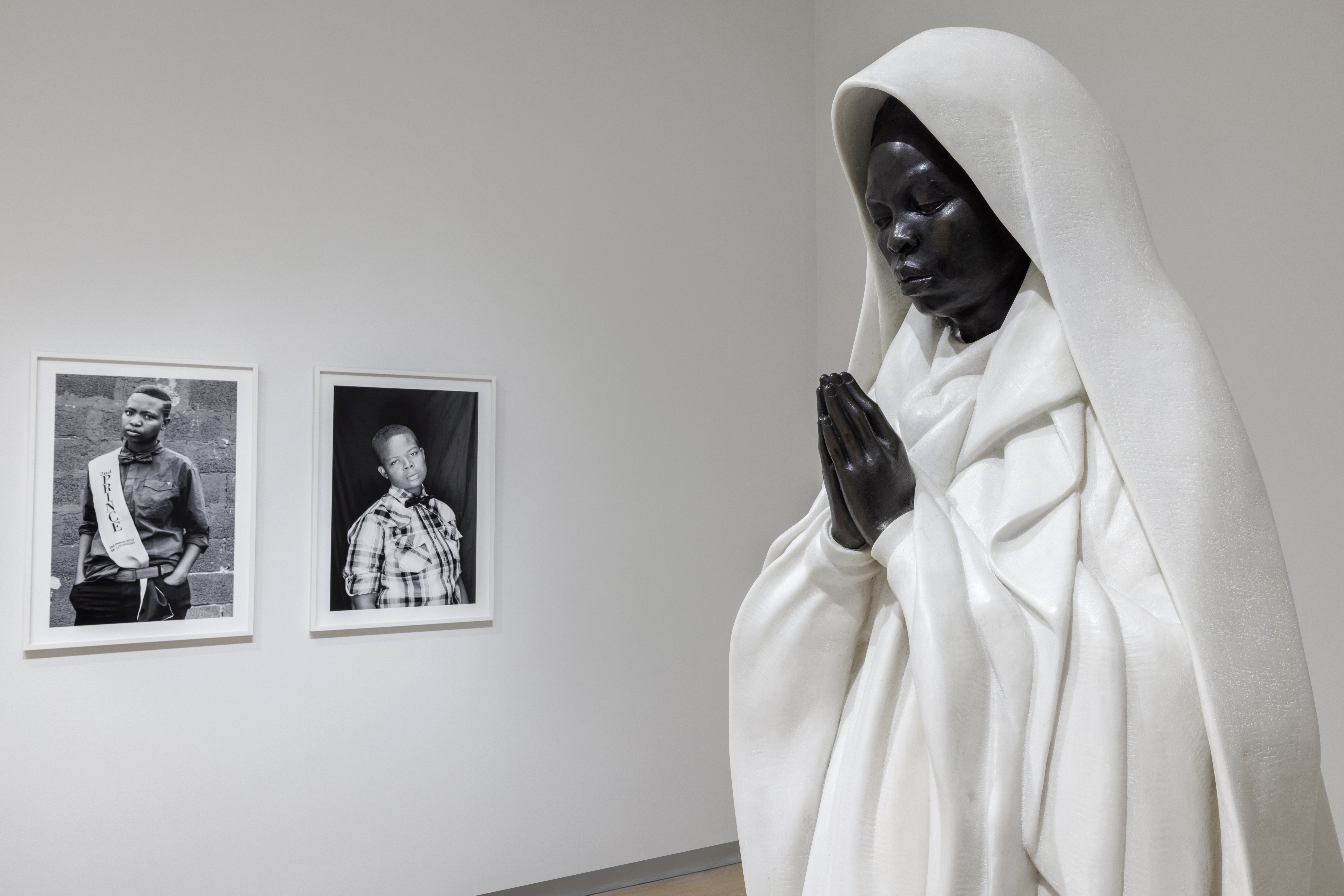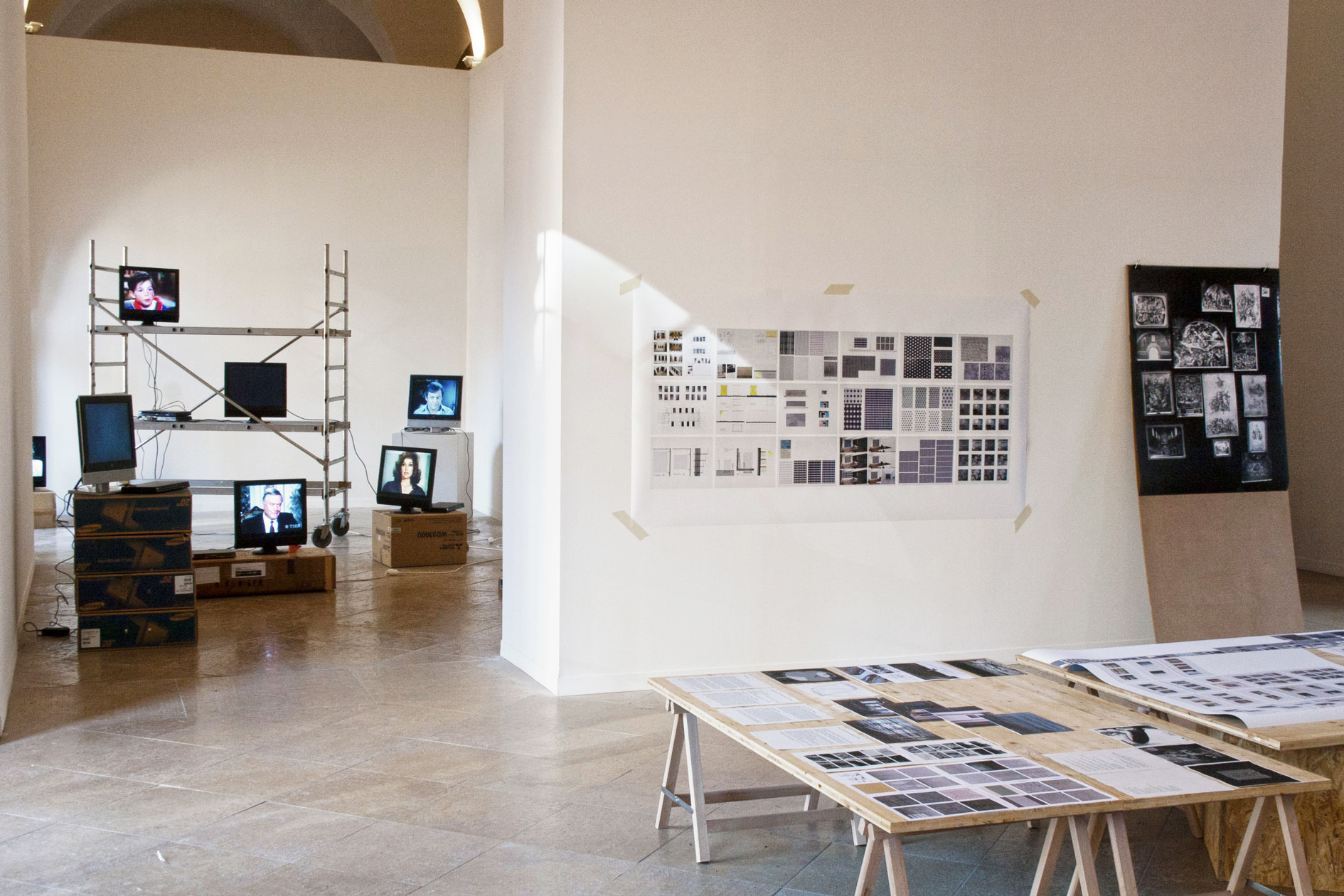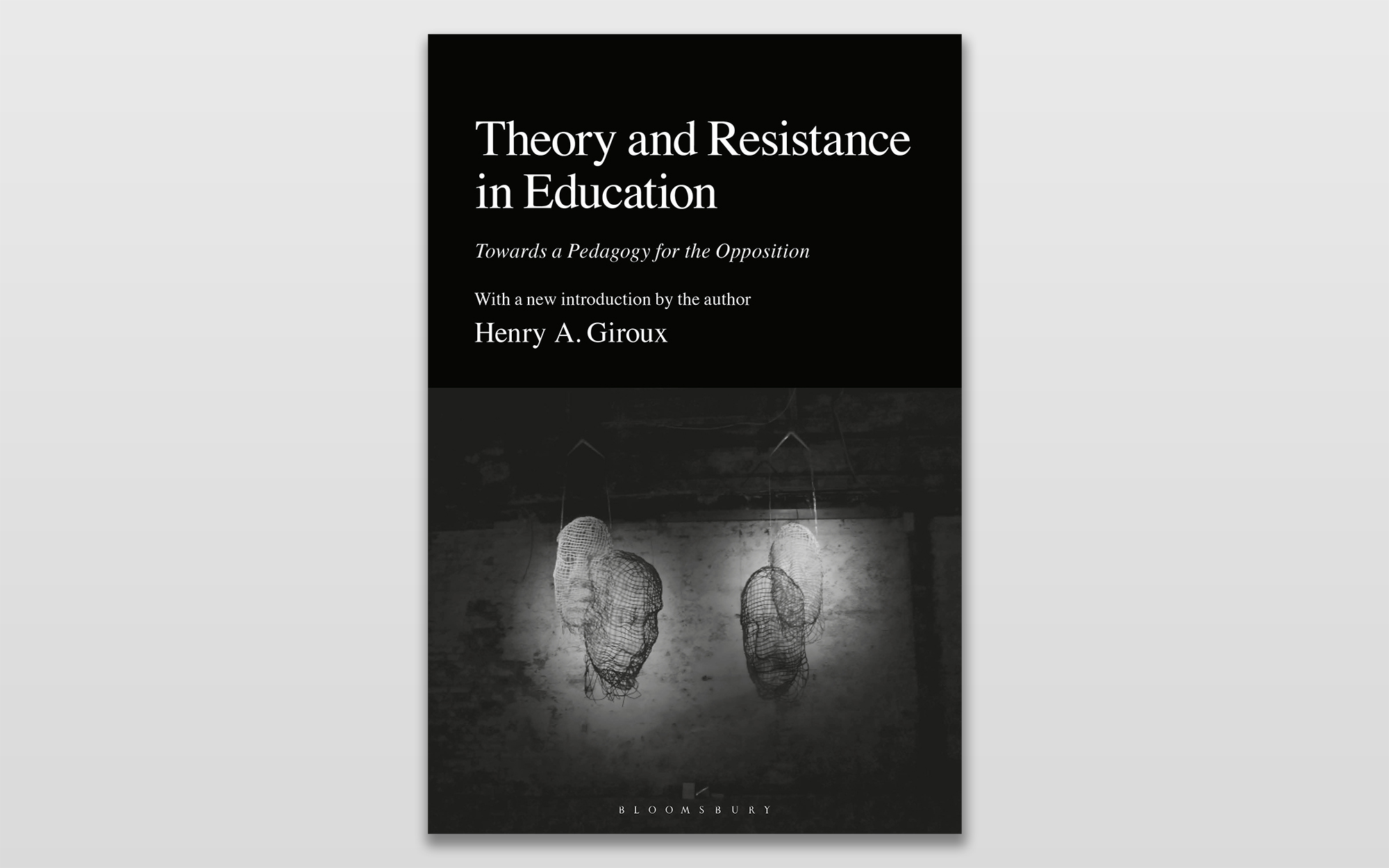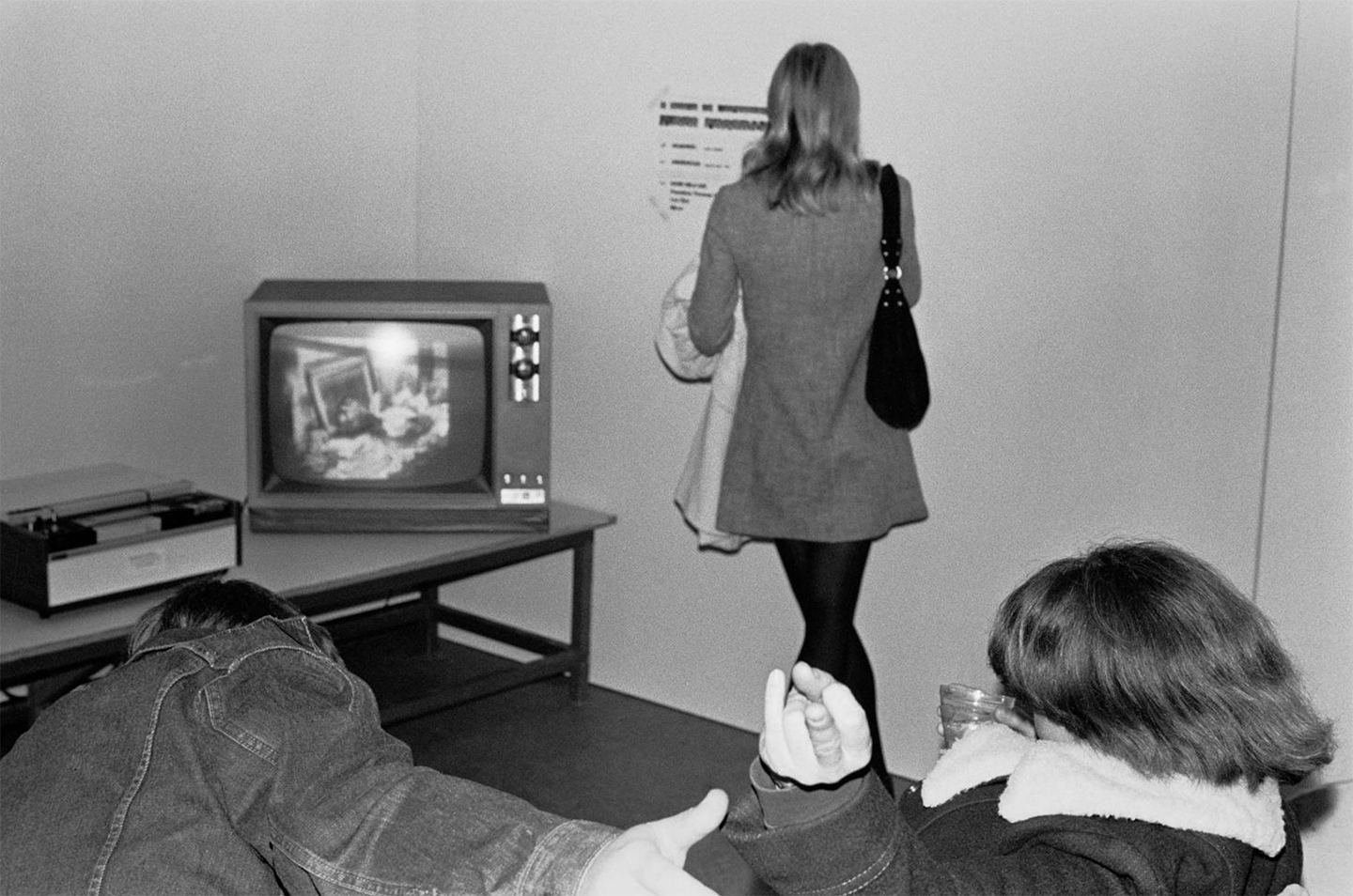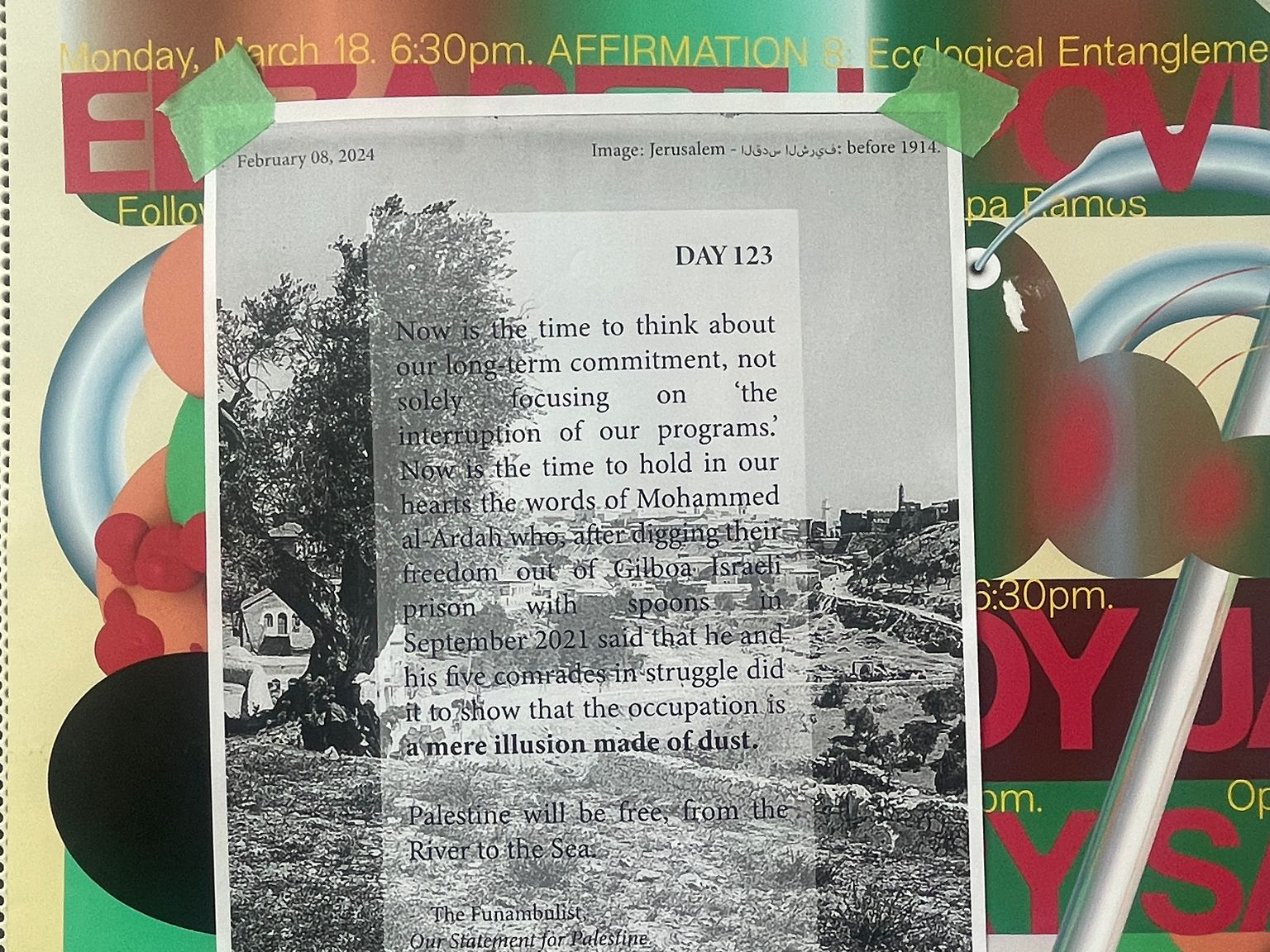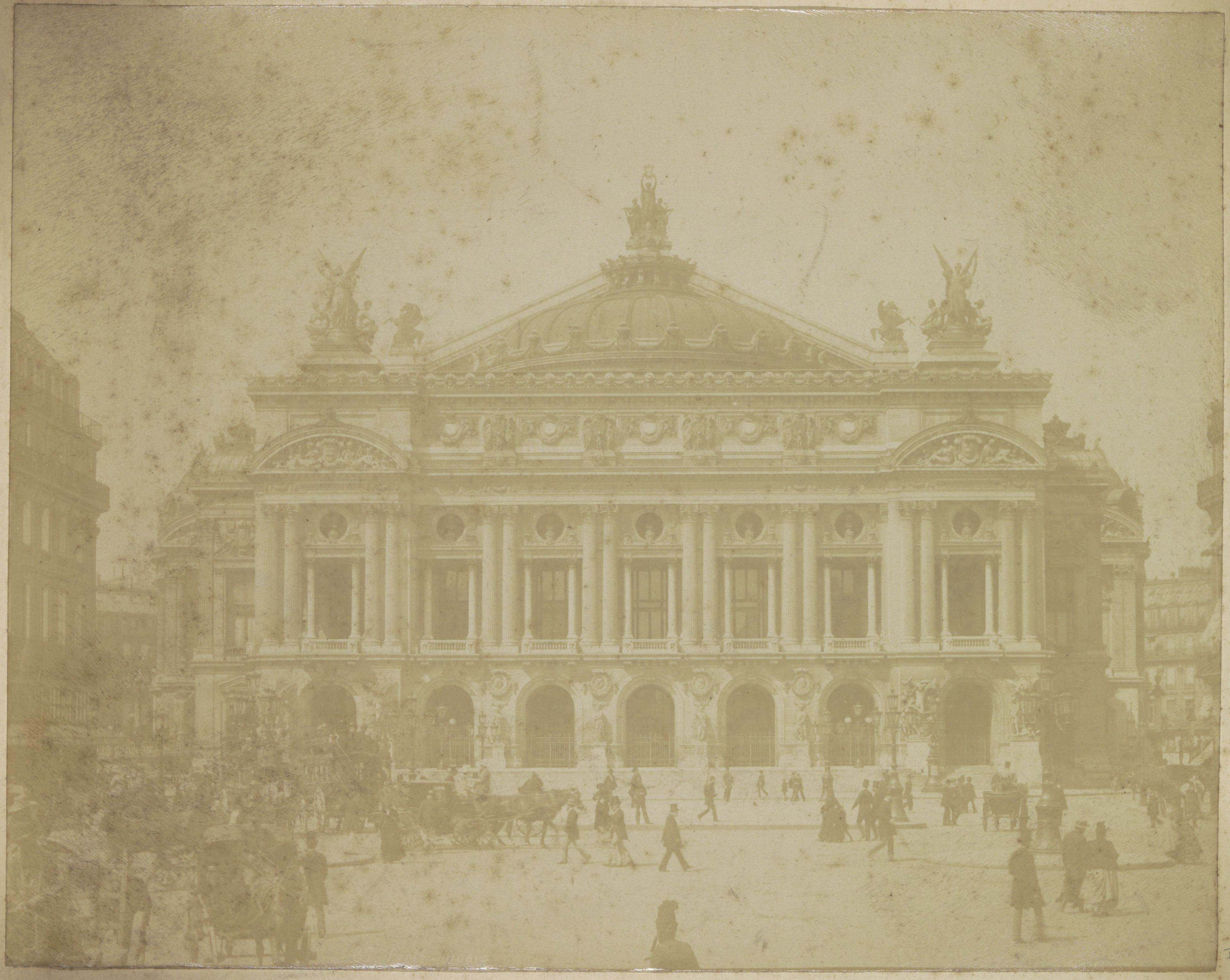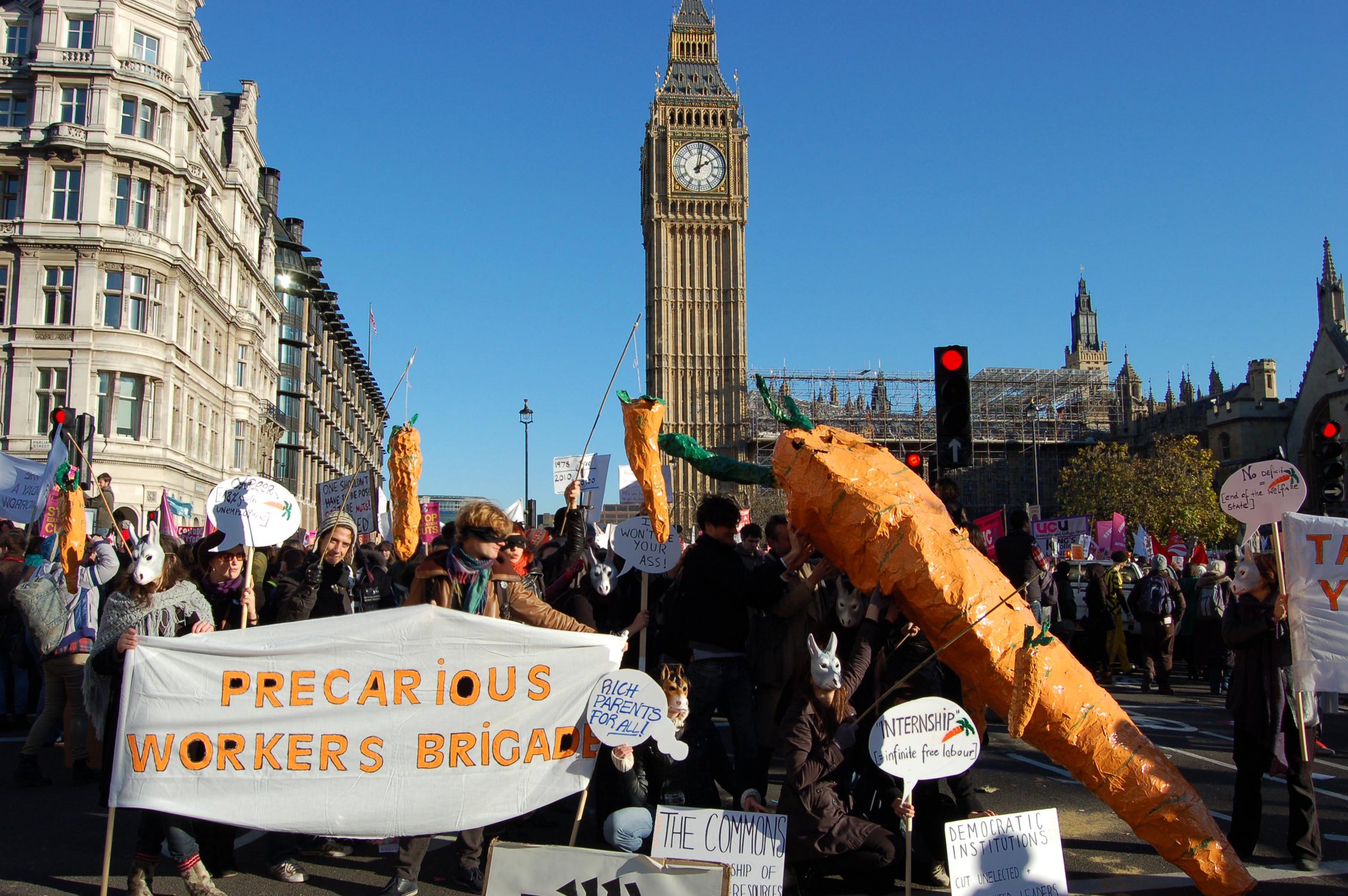One tepid evening last March, during my penultimate semester of graduate school at Virginia Commonwealth University, I was trotted out to a student mixer with the university’s donors. There, I was introduced to a former automotive executive, and after informing him of my plans to pursue a doctorate in art history, he skeptically asked an all-too-familiar question about my degree: “So, what are you going to do with that?” His question, which suggested that my fate of postgraduate underemployment was all but sealed, points toward a belief held by many: art and those who make it or write about it have little to contribute to the real world. I cannot recall my response—the justification I provided for pursuing a field that does not yet fully conform to the logic of capitalism. Perhaps it should not have been a surprise that I might be forced to justify, with some frequency, my decision to study art between the dawn and twilight of the Obama era and its emergent technocracy. In the wake of 2008’s economic maelstrom, the discussion of the value of art fell more often under the jurisdiction of quantification than critique. Writers devoted extensive bandwidth and column inches to the ever inflating art market, with its nine-figure auction prices and purported zombie formalists. But if these were “good” years, what will the next four bring for artists under the presidency of Donald J. Trump? If we imagine art workers in the United States—students, artists, writers, curators, conservators, and more—as a community facing a dominant minority’s gilt fascism, what are we collectively going to do?
Three days after the election, I found myself very grateful to be in New Haven, Connecticut sitting with fifteen first- and second-year painting/printmaking MFA students in the Yale School of Art’s painting studios at 353 Crown Street. I didn’t take notes or record our conversation, choosing instead to listen and absorb. The following hour floated by as students candidly discussed their reactions to America’s hard-right turn and their insistent sense of resolve not to succumb to fear. These students’ concern for both comrade and country dispelled any expectation I might have had that Yale was a snake pit, replete with ruthless competition and careerism. Rather, I found a community eager to catalyze political change and resistance. Over the next two months of visits and phone calls, many students and faculty in the School of Art’s painting/printmaking, sculpture, and photography departments voiced a common belief: artists need not have political practices to be effective political subjects. It is not only possible to maintain a studio practice and a political life, but essential. Political crisis is not a reason to abandon the studio; instead, it signals the urgency with which one must introduce new images into a body politic that will soon be governed by an image designed to distract the population from the elimination of social welfare and the exploitation of political office for personal gain.
When I asked the roundtable of painters that November afternoon what they thought of Yale’s ranking as the country’s top art school, one frankly asserted that it’s “bullshit.” It’s not that many students and faculty weren’t proud to be at Yale—almost everyone was. Rather, the students were skeptical of the objectivity of art-school rankings. Second-year Abraham Lampert reasoned that to be a student at Yale is about “getting over the mythology built around the school and realizing it’s just a place with people in it.” But how did this myth originate? And how can something as subjective and contested as art school be ranked? Is it Yale’s community that organically created this elite aura? Or is this reputation a consequence of the school’s many notable alumni and teachers? Is there anything at all special about Yale’s curriculum? Certainly, Yale keeps history as a close ally. Eva Hesse sat through art history surveys in those Ivy League halls, and in the ’60s Nancy Graves, Richard Serra, and Brice Marden were classmates there. It’s where Matthew Barney played football and Kehinde Wiley patented his calling-card style of painting. More recently, it’s where gallerists have recruited artists like Tschabalala Self for their first New York solo shows, some before graduation. Moreover, as the top-ranked art school in the United States, it may come as a surprise that Yale avoids doubling down on the Silicon Valley rhetoric of innovation, creative entrepreneurship, and disruption that is in vogue with so many art schools now. Instead, its programs profoundly emphasize a commitment to their namesakes: painting, photography, and sculpture.
There’s a radicality to stridently believing in formalism and finding value in mediums so many of us art workers are inclined to dismiss as commodities incapable of agency. Anoka Faruqee, painting/printmaking’s director of graduate studies, currently on sabbatical, traced the program’s commitment to formal exploration to the pedagogy of Josef Albers, the noted Bauhaus and Black Mountain College educator who helmed the School of Art’s graphic design department in the 1950s. “He really laid the groundwork for thinking about material and formal investigation as the foundation of art production,” said Faruqee. Concepts “entering” students’ practices and interdisciplinary work is encouraged, but Faruqee pointed to the concerted commitment to painting-as-painting that has supported the school’s mission to educate artists, especially through a tumultuous semester that has “forced us to look at power.”
While all students are required to take courses in addition to individual studio time—new dean Marta Kuzma leads a Frankfurt School–charged seminar titled “Diving into the Wreck: Re-enacting Critical Practices,” which, according to Kuzma, “aims toward a cultivation of consciousness that extends self-knowledge into a sense of community through the act of criticism”—painting/printmaking places particular emphasis on studio visits and critiques, which Abraham Lampert described as “invaluable.” Some faculty drop in weekly, and all students must meet with each full-time faculty member at least once per semester. Critique in Yale’s painting/printmaking department is uniquely harrowing. Colloquially called “Pit Crit,” all forty-two painting students, faculty, and visiting artists, in addition to other members of the Yale community, assemble in the somewhat menacingly named “Pit,” a courtyard-like critique space where participants can judge from the ground level or the floor above. Faruqee admitted that this theatrical, if not gladiatorial, atmosphere can be daunting to a young artist, but it is a hallmark of the school’s teaching method, originating with Albers, who, said Faruqee, was something of a “showman.” And while it can be challenging for students to defend their work in front of a large audience and in such a unique setting, interim graduate director Anna Betbeze explained that critique begins by answering a straightforward question: “What is in front of us?” Only after an answer is determined does the discussion segue into a dialogue about meaning. Students lead the conversation for several minutes before faculty contribute their perspectives. According to Faruqee, the worst-case scenario is that Pit Crit devolves into a “battle of egos” or a “series of unrelated comments,” but more frequently than not, a thoughtful, constructive conversation develops in which students “contradict each other, but in a respectful way.”
Photography graduate director Gregory Crewdson leads a program in which “each artist figures out their own relationship to the medium,” and where an understanding of “how pictures work” and photography’s democratic nature as the “currency of culture” is cultivated. “Yale still believes in the notion of individual mediums,” asserted Crewdson, and while the line between disciplines can blur at times, it is “a picture-based program in terms of our interest in images and what they mean.” Students share this enthusiasm for the program’s tight focus; second-year student Res admitted, “I don’t want this program to be interdisciplinary.”
As in painting/printmaking, students in photography are subject to intense critiques, which they ultimately credit for honing their photographic acumen. In the “Pool,” photography’s Pit Crit, each student’s work is evaluated every five weeks (three times as often as other art departments at Yale) for about fifty minutes, with four students presenting each week. “When forty faces stare at you [along with] a panel of people who you dreamed about as a child,” explained first-year Dannielle Bowman, “you’re fucking held accountable and you better come correct.” Despite the pressure, second-year Danna Singer said that “there’s a surrendering to admitting, ‘I don’t know everything,’” especially in the public format of critique. “People will say something’s offensive, people will say things that don’t make sense,” said Res, but no one takes it personally. However thankful for the seriousness and candor of the photography community, Singer confided that “you don’t realize how emotional going through this program is.”
The photography program is currently without private studios, the construction of which was one of Dean Kuzma’s primary initiatives. The absence of studios was a deliberate decision by the program’s former chair, explained Res, since, ideologically, photographers do not require studios because “they’re out in the world.” Still, some photography students elect to pay for their own studios off campus in addition to the facilities Yale provides—darkrooms, a digital printing lab, and other equipment.
Despite the added cost of a studio off campus, Res determined that it would have been more expensive to attend the MFA program at Hunter College, in New York, after factoring in New Haven’s (relatively) affordable cost of living and Yale’s tuition-assistance opportunities. Critic and director of digital technology Sarah Stevens-Morling pointed out that “approximately 92 percent of our students who applied for financial aid” received scholarships during the 2016–17 academic year, with an average award of $31,325. According to Stevens-Morling, this need-based financial aid allows Yale “to cultivate a diverse group of artists and voices across our disciplines.” In other words, because of its financial aid packages coupled with its reputation, Yale can handpick each cohort and perpetuate its competitiveness. Yes, Yale provides an Ivy League education, and while it may do so without requiring a trust fund, the cost of tuition, fees, and expenses, without grants or scholarships, still totals $58,200 per year.
Finances aside, what does the environment of critique, so central to education at Yale, feel like? At the end of the fall semester, with the immediate postelection fury mostly abated, the director of graduate studies in sculpture, Martin Kersels—a gregarious man with orange spectacles and a grey goatee—invited me to attend one of his department’s critiques. An atmosphere of protest was still quite tangible, but the students and faculty seemed more focused on what stood before them: art. The first student in the hot seat was first-year Valentina Zamfirescu, who presented two pieces: a cascading installation of paper rolls painted black, titled Steel Aluminum Planes (Sisters); and Cavity, a waist-high amorphous foam sculpture planted on the dark paper-roll banners. Every sculpture critique begins with description. A student who did not make the work (the “describer,” as Kersels terms it) is charged with explaining the art so that “all of us have a common vernacular about the work,” explained Kersels. What is the work made of? What is the work’s title? How many components are there? The idea is that, by posing such questions, faculty and students can objectively assess the work—a difficult task in the setting of graduate school, where everyone knows each other all too well. The critique developed over a series of associative comments. “It makes me think of writing,” observed critic Leslie Dick, “as well as a measure of time.” Comments also reflected the election. “I’ve been thinking about Donald Trump as a Nazi—this is the black wave coming at you, and you can’t get the full feeling of it yet,” hypothesized Kersels. Soon the conversation turned toward the ontology of the pieces, because “the second they are touching, it reads as one,” noted critic Jennie C. Jones. “I’m forced to reconcile the relationship between the two. I almost want to ignore that separation between these works,” agreed second-year Ashton Hudgins. “A cavity is defined by what is around it.”
Kersels explained to me that this progression was standard. Critique begins with “people throwing things against the wall” and then evolves into a discussion of “interpretation and intent,” leading “eventually to criticism.” He added, “Sometimes we get to a group consensus as to how [a work] functions,” though he ultimately prefers multiple “threads, rather than a bunch of different voices.” The organic nature of critique lends itself to the ethos of the program, which Kersels said is guided by “experimentation” and “an open interpretation of what one might consider sculpture,” an approach somewhat different from painting/printmaking and photography. Abraham Lampert succinctly offered his thoughts on the sculpture program through the eyes of a painter: it’s “much more conceptual.” Kersels affirmed the conceptual lean of the program. “I like to think of most work produced here as unfinished,” he said. “I want people to develop specific ideas for their own work,” as well as “confidence” and, quite crucially, “a community that supports the artist and the work.”
What form can resistance take after the election? Does it have the immediacy of a photograph, or is it perpetually unfinished like a sculpture? To borrow a question from Anna Betbeze’s painting critique: What is in front of us? For the community at the School of Art, coalition-building began immediately after the election, and took shape inside and outside the studio. As if preparing for a siege, students and faculty pursued a long-term and measured course of action, connecting with resources outside of the School of Art. On November 14, the Yale Law School organized a postelection workshop to address the threat posed by the incoming administration to immigration policy, LGBTQ rights, and women’s health. The workshop attracted more than a thousand students—including many of Yale’s MFAs. Opportunities for collective action have followed. “We’ve continued to be active as a community,” said second-year painting/printmaking student Stephanie Gonzalez-Turner, who added that many of her colleagues have been asking, “What is it to be politically engaged, and what is the potential of that work to enact change?” Students have developed “strategies for organizing” and are particularly keen to ensure New Haven maintains its status as a sanctuary city for undocumented immigrants. Action, however, does not come without pragmatic idealism, as painting/printmaking first-year Estefania Puerta elucidated: “The tangible actions are not in fruition yet because the election just happened. End-of-semester final reviews just finished. We understand that it is going to take more than a statement of solidarity to respond as a community.” Resistance takes shape like a painting, deliberate mark after deliberate mark, all of which accrue to become something meaningful and lasting.
In New York in 1987, as the AIDS crisis reached its apex and Ronald Reagan begrudgingly acknowledged its existence, the AIDS Coalition to Unleash Power—ACT UP—was formed. The art workers active in the group—Douglas Crimp, Robert Gober, and Donald Moffett, to name a few—responded to the crisis by marching on Wall Street and St. Patrick’s Cathedral, demanding that pharmaceutical companies end their AIDS-drug profiteering and that the Catholic Church abandon its hard line against safe-sex practices and same-sex relationships. The march became a powerful vehicle for catalyzing local and national policy changes regarding the AIDS crisis, challenging that era’s conservative movement through art and direct action. ACT UP and Gran Fury, the anonymous art collective it produced, maintained a creative and a political practice, most notably in the exhibition “Let the Record Show…” at the New Museum, and in the now-iconic slogan “SILENCE = DEATH.” After November 8, 2016, ACT UP continues to provide an important model for resistance, one cited by numerous faculty and students of the School of Art for its potent organizational politics and strategies for direct action, community-building, and opposition. ACT UP arose because a group of gay men were witness to how a pathogen disfigured their community. Not so dissimilarly, the Yale School of Art, by virtue of being a community that both practices and believes in difference, represents the ideas and policies that threaten—and are threatened by—the incoming administration.
Many of us now feel an anxiety about art, that it must do something. I find purpose in the words of the late anthropologist Alfred Gell. “Art is a system of action,” wrote Gell in his book Art and Agency, “intended to change the world rather than encode symbolic propositions around it.” To answer that biting, incessant question about what art must do, perhaps we should not ascribe a political performativity to art; otherwise, art could veer toward the propagandistic and immerse itself in ideology. We will not beat the whites with the red wedge. But perhaps for the first time in eight years, many of us are wondering, along with first-year Gonzalez-Turner, “What it is to be politically engaged, and what is the potential of that work to enact change?” At Yale, a new generation of artists is organizing itself into a cogent political force that is both educated and working class (what other demographic welds while wielding Baudrillard?). The metrics of art’s success do not adhere to the metrics of the automotive executive I met at VCU, or to those of the incoming conservative kleptocracy. The success of art and resistance necessitates shape; thankfully, artists produce form.
—Owen Duffy
